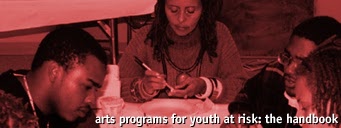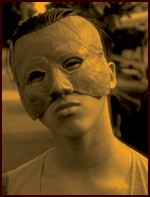


Running Your ProgramOnce you have agreed upon outcomes, established program activities, defined roles with partners, provided for the logistics, and hired and trained your artists , you are ready to invite the youth and begin your program. The Evaluation chapter contains information on ways to keep track of how well your program is working, which in turn will help you make adjustments as needed. You should also ask the youth their views of the program while it's in session and after it's finished. This section includes information about:
Download the full section (in PDF format; see pages 65-68). Invitation to youthThe invitation to participate in an arts program should include benefits to both the youth and their parents as well as program specifics and a permission form to be signed by the parents. An invitation may not be enough to motivate the youth to come to the program. It may help to call each youth personally to invite them to the program. In some cases, attendance is required as a part of the youth's probation. Since probation officers participate in the program on a regular basis they are able to give youth encouragement to start and stay with the arts program.
Participant release and consent formsCheck with your partners to see if a participation form is necessary; they may already have the necessary permissions. If not, to protect your organization and to have permission for youth to participate in events, plan on having parents sign a participation form. If information is going to be shared among agencies that operate under different protocols, the participant release and consent form is imperative.
Conflict managementThese programs use art-making as a tool to give youth other skills and benefits, such as discipline, timeliness, communication, follow-through, increased self-esteem, decision-making, anger management, and community involvement. We approach conflict management through curriculum development; involvement of youth in making decisions; role modeling by artists, educators, and caseworkers; group rap sessions; behavior modification techniques; and engaging youth in arts projects. This section covers the importance of involving youth in the process of establishing program ground rules as a conflict management technique as well as a technique, to teach youth skills such as showing up on time, follow-through, working together as a team, and so forth. The Team Training section offers other conflict management techniques. Resources
|
|
|||||||||||||||||||||
